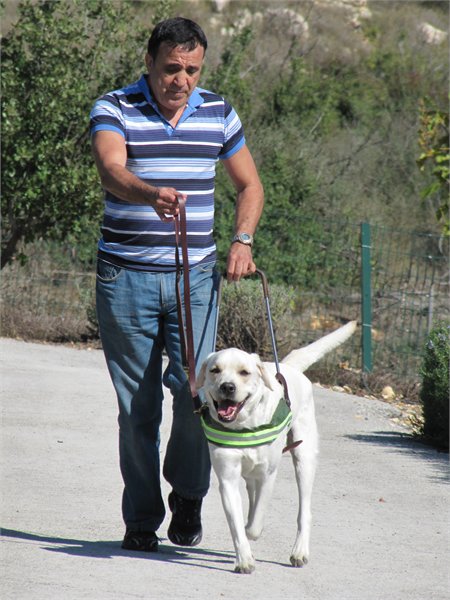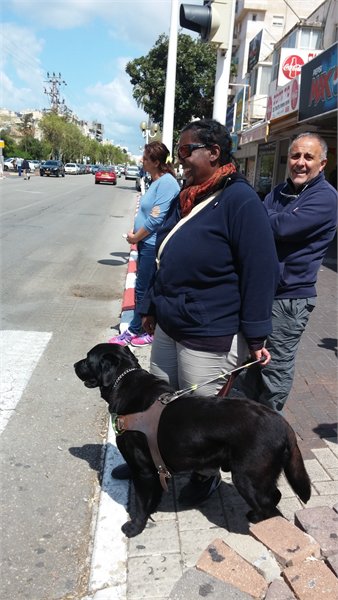Today, Israel has a population of about twenty thousand blind people. Out of them about 60 percent are at the age of fifty-five or older.
Prior to the establishment of Seeing Eyes for the Blind, the blind and visually impaired had to fly abroad to receive guide dogs. Training was conducted in English and upon their return to Israel there was no local support and follow-up service at hand.
The blind who returned to Israel with their dogs encountered difficulties stemming from a lack of understanding, knowledge and laws appropriate to the needs of the blind and their dogs. These included entering public places with the dog, public transportation, restaurants, etc.
In the past, only 0.6 percent of the blind population in Israel owned a guide dog. Although this number has doubled since then, it is still low compared to Western countries, where the rate of people who use a guide dog is 3.5 percent of the total blind population.
About a hundred blind individuals in Israel are disabled military veterans and half of them own guide dogs.
Before the establishment of Seeing Eyes for the Blind guide dog training center, the blind had to get a permit from the Ministry of Welfare to go abroad. A key condition for obtaining the permit was proficiency in English and good health.
The acceptance of the blind and guide dogs among seeing people is better today compared with the past due to a higher awareness of the needs of the blind and their dogs. The training performed in Hebrew and the local follow-up and support service increased the success rate of the blind with guide dogs.
When the Blind Eyes Association was established, the waiting period for a dog was about three years, while today it is about a year.
Due to the success of the project, there is a growing demand for guide dogs.
In Israel there are two centers for training and guiding guide dogs for the blind.






